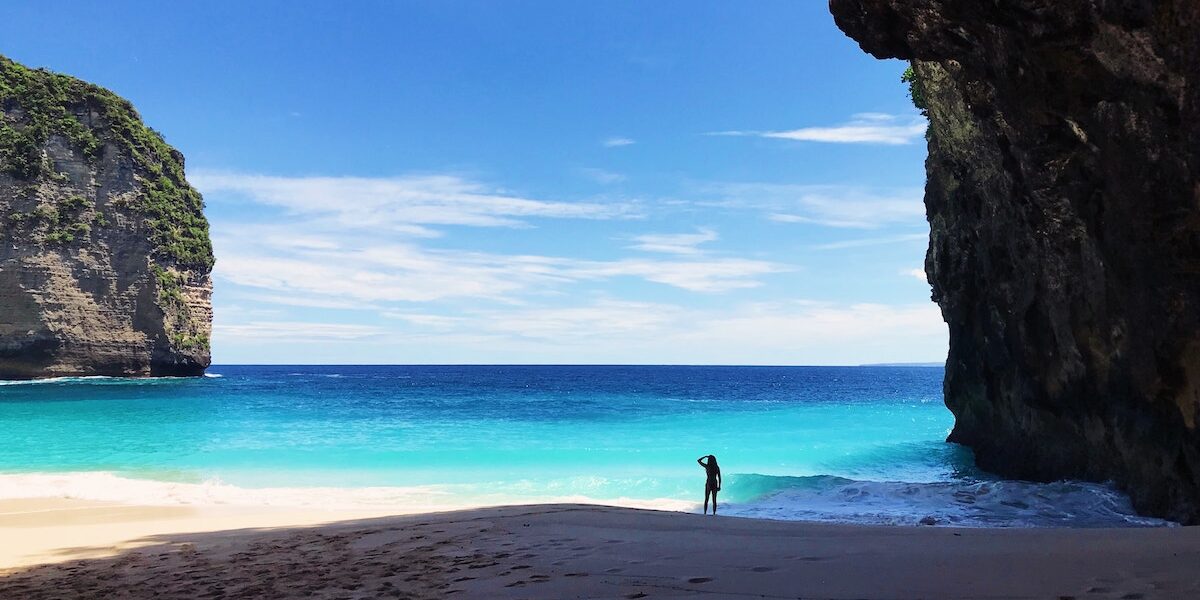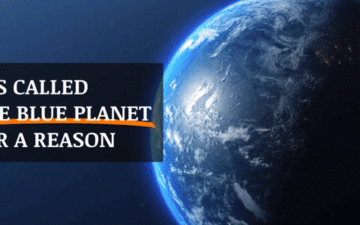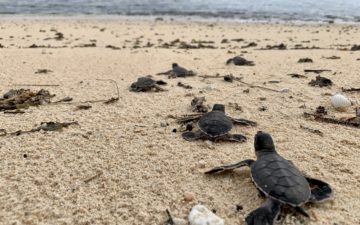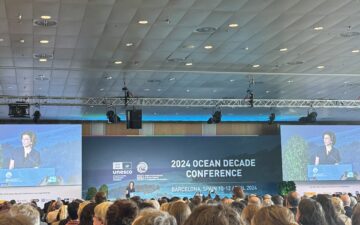There were a lot of great environmental movies and media projects in 2015. Here are a few of our favorites:
Mark J. Spalding, President
She Went Through a Shock While Shopping for Shoes (from Change Your Shoes)
This video connects our western consumer culture society with the places our products come from, and the people who make them. Everything this says about changing your shoes applies to how we decide what fish to eat. (Editor’s note: you have to be logged in to Facebook for this one)
She went through a shock while shopping for shoes. Share.
Take the first step towards a fair and transparent shoe industry. Download the app today.iOShttps://itunes.apple.com/app/id1003067797Androidhttps://play.google.com/store/apps/details?id=com.cantat.cysmade by DRUŽINA
Posted by Change Your Shoes on Tuesday, September 22, 2015
More Fish Please
We have a special focus at TOF on the Caribbean and this film is both delightful and it is clear about why MPAs are important and should be used to protect places, the critters who live there, and the people who depend on them.
The Original California (from Keep Loreto Magical)
I am fortunate to travel all over the world. The place I return to, that feels like home, is the Baja California Peninsula. This is my special place that I care about…
Karen Muir, Vice President, Operations
Nature is Speaking – Harrison Ford as the ocean (from Conservation International)
From the first time I saw this video I was so captivated by its brilliant perspective of the narrator speaking as the ocean. It draws you in, and for me, unlike many conservation videos, kept me engaged until the end. The video on its own would be a great piece, but who can resist Han Solo as the narrator!
Raise the River vs. Move the Ocean. Full Story. (from Raise the River)
Bringing humor into the conservation message with two dynamic stars as these truly captures the essence of what we all work to achieve- helping everyone understand the global conservation problems and begin to see the solutions without over complicating the issues. The importance of understanding that all water is interconnected is key to truly understanding the challenges we face.
Jarrod Curry, Marketing & Operations Manager
Mad Max: Fury Road (from George Miller / Village Roadshow Pictures)
The first thing that struck me about Fury Road is its lack of exposition. The movie doesn’t tell you how the world got this way, it barely tells you anything. It takes place in a future world ravaged by drought and extreme weather, but there’s no back story, it doesn’t bring you up to speed about what humans did to get to that point. You see a dry, sunburnt wasteland and you immediately get it. The climate changed. We made that world. Fury Road doesn’t try to be an environmental movie, it’s a beautiful, explosion-fueled, action-packed summer blockbuster. But it exists in a post-climate change world. It doesn’t tell you that outright, you see it and you immediately understand it based on what you know about the catastrophic potential of climate change.
What I Talk About When I Talk About Tuna (from Lauren Reid)
There were a few great mixed media journalism pieces on ocean issues in 2015, like the New York Times’ The Outlaw Ocean. But my favorite example is Lauren Reid’s What I Talk About When I Talk About Tuna series. I had the distinct pleasure of spending a week with Lauren at Conservation Media Group’s (a TOF grantee) Ocean Video Workshop this summer, right before she set out on Greenpeace’s Rainbow Warrior to begin this project. Seeing the excitement in her eyes as she planned to tackle such a trip and then watching and reading about her experiences as she traveled was absolutely inspiring. Her first-hand account of tuna fisheries in the Pacific will make you reconsider what you’re eating.
Ben Scheelk, Program Manager, Fiscal Sponsorship
The Cross of the Moment (from Jacob Freydont-Attie)
While only sprinkled with beautiful nature imagery like many other environmental documentaries, this film confronts the underlying currents of climate change–the systemic issues we must confront as we attempt to prevent the worst potential consequences of a warming planet. Through an extended series of thought-provoking, and, at times, unpolished interviews, “The Cross of the Moment” is a gritty conversation served up by a Cerberean cast of apocalypticists eschewing capitalism as a catalyst for environmental destruction. Although I certainly agree with the fundamental argument that we must transition away from fossil fuels as soon as possible, ideologically, I must admit, I maintain an entirely different perspective on the limits of growth and the role of technology. Nevertheless, the film presents a powerful leading argument in Fermi’s paradox: If life should be as common as Drake’s equation posits, then where is everyone? Given that the universe appears so empty and dead, is it possible that all advanced civilizations eventually fall victim to unsustainable growth? This film asks with a refreshingly brutalist spirit: Is this the fate of mankind?
Caroline Coogan, Monitoring & Evaluations Associate
A Legacy Story: Protecting the Bering Sea & Bristol Bay from Offshore Oil & Gas Drilling (from Alaska Marine Conservation Council)
“A Legacy Story” is about the legacy and traditions of the native people of Alaska, and the legacy that an oil spill leaves in its wake. The video follows the Exxon Valdez spill and the leasing program, and the short- and long-term impacts the spill has had on fisheries and native communities. This story highlights the short-term memory of politics, and the negative ramifications that can have for long-standing communities. Going beyond the problems of climate change, “A Legacy Story” hits on the other issues surrounding fossil fuels – the spills, the impacts on fisheries and traditional livelihoods, on economies, and other social impacts of a disaster. “A Legacy Story” ends with a new legacy being passed on to new generations – that of standing up to mining and drilling corporations to protect traditional ways of life and entire ecosystems.
Sea of Change (from Chesapeake Climate Action Network)
Sea of Change (this is from 2013 but I only saw it this year): On the other side of the continent and the other side of the fossil fuel issue is “Sea of Change” by the Chesapeake Climate Action Network. The video delves into sea level rise on the East Coast from a scientific and community perspective. I like this video because it is not just a string of scientists showing you graphs of water levels, it actually follows local people who have recently experienced “nuisance flooding” during storm events. Any old rainstorm these days completely floods neighborhood streets, and seriously impacts people’s every day life and health. This video is a great way to drive that point home to those of us who are perhaps more removed from the dramatic and very real impacts of climate change we are seeing NOW, not 10 or 50 or 100 years from now. And, as CCAN’s director points out, it’s not just now but 15 years ago – we are 15 years behind locals in Louisiana saying the water is rising and the storms are getting worse. That’s another point I like about this video – it highlights how important it is to listen to local communities and heed the observations of the non-scientific community. People from Louisiana to Hampton Roads, Virginia have seen the waters rising and have noticed the differences, and the Department of Defense itself has noticed climate change since the ’80s – so why are we not prepared and addressing the problem more seriously?
What I like about both these videos is that they are from highly localized groups – they are not national or international NGOs with large communications budgets, but have produced quality communications pieces that use local examples to address global issues.
Luke Elder, Program Associate
Climate Change is Happening. Here’s How We Adapt (from Alice Bows-Larkin / TED)
Climate researcher Alice Bows-Larkin explains the impacts predicted with a 4 degree Celsius temperature scenario on global organized living, from infrastructure, food production and energy systems to human consumption and demand. Her message is “in order to avoid the 2 degree framing of dangerous climate change, economic growth needs to be exchanged, at least temporarily, for a period of planned austerity in wealthy nations.” She asserts the necessity of a whole system change, trading economic growth for climate stability.
Michele Heller, Program Associate
Manta’s Last Dance (Shawn Heinrich)
This project is my favorite and one of the reasons I was inspired to go to back to school for a Master’s in Marine Biodiversity and Conservation at Scripps! When a person isn’t familiar with a marine creature, or even a foreign concept of some sort, it’s often very difficult to convey information about that topic or dissuade preconceived notions. I’ve found that this is the case with sharks, skates and rays. Sensationalistic media coverage, portraying sharks as blood thirsty man-eaters, prevents mainstream audiences from fully understanding the plight of sharks as affected by the shark fin and gill racker trades for shark fin soup and medicinal purposes. Over 100 million sharks and rays are killed each year to fuel demands in Asian markets, but at the first mention of shark, most people immediately think of the film Jaws.
But through his art, Shawn has found a way to juxtapose something familiar (in this case, a beautiful fashion model unhindered by any diving apparatus) with something unfamiliar (an massive oceanic manta ray 40ft below the surface) allowing the viewer to take a moment to be curious, ask questions and be inspired by something newly discovered.
Jessie Neumann, Communications Assistant
The DOs and DON’Ts of Waste Disposal, as told Dutty Berry (from Nuh Dutty Up Jamaica)
I have watched this video at least 20 times since it was first released in August. Not only is the video creative, humorous and catchy, but it actually addresses a real problem that Jamaica faces and gives concrete solutions. The campaign Nuh Dutty Up Jamaica is geared at improving knowledge and attitudes with regard to waste and its impact on public health and the environment.
Phoebe Turner, Intern
Racing Extinction (from the Oceanic Preservation Society)
Racing Extinction is a documentary, in part, about The Age of “Anthropocene”, the age of humans, and how our actions are a driving force in chasing away nature. I thought Racing Extinction was an important documentary because it shows how our actions, such as our CO2 emissions, overfishing and the deep dark circles of the illegal wildlife trad, play a key role in chasing away all of nature. One of the most distinguishable moments for me was when they showed what looked like rooftops and rooftops, that were the size of basketball gyms, covered in shark fins in China. The film stressed why action was important, and didn’t leave you feeling hopeless, but rather empowered to do something. It is a movie I wanted my dad to see, so I watched it again with with him while at home over the holidays. He said that he thought “it was a documentary that everybody should see right away,” and that it was going to change a lot of how he entered his daily life.







